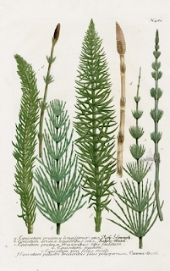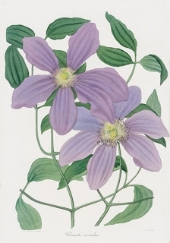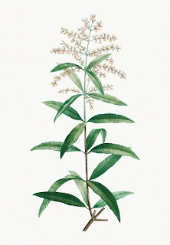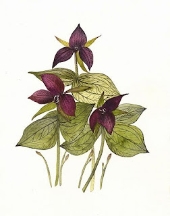
This plant grows abundantly where I live…. All over my yard, basically. It is a very tender, water-filled “weed” that grows around 3 feet tall. It requires a lot of water to thrive, and we get tons of rain. The flowers are very pretty. There are two varieties, yellow and orange, and they can be used interchangeably. I prefer the name, Touch Me Not, because it seems more appropriate – the seed pods burst at the slightest touch, scattering their seeds all around. Medicinally, the plant is an excellent preventative and treatment for poison ivy and poison oak rashes. I would let it grow for that reason, alone. But, it is also a very tasty wild edible. I usually refer to young, tender shoots of spring plants. But this one is tender year ‘round. However, the shoots are still best harvested in the spring before they get much more than 6 inches tall. The shoots may be cooked just like asparagus and are quite good. Later in the year, the seeds of the plant are sweet, nutty and well worth collecting… if you can. The seed pods explode when even lightly touched, which is why this plant is called Touch Me Not in my region.
Jewel Weed shoots pair extremely well with milk/cream, eggs, mayonnaise. Really, anything creamy. I’ve already given several recipes for cream soups and casseroles, frittatas and omelets. Why not something more exotic? Well, I love a good Thai curry, and several veggies including this one, work very well in curries….remember the Indian Cucumber? I love all curries – Indian, Chinese, Thai, etc. To make a curry, simply fry up the vegetables of your choice, brown some fish or meat if you like, and add the curry seasonings of your choice. Curry powders are usually purchased premixed, and are specific to which ever curry tradition you choose. I always add extra turmeric. Usually some stock or water is added and this simmers into a curry sauce. Thai curry utilizes coconut milk to counter the very hot peppers and includes some lime leaf or citrus zest. The coconut milk works perfectly with Jewel Weed shoots.
Another good idea is to combine your Jewel Weed shoots with chipped beef in a cream sauce. Creamed Chipped Beef is a delicious dish that has gotten a bad reputation due to inferior, canned versions. Chipped beef is simply salt cured beef. This was a popular dish in World War 2 and the Korean War, but I am afraid the military’s version was focused more on storage and portability than flavor – Creamed Chipped Beef on toast was also known as S.O.S. or “Shit on a Shingle”, as were several other dishes, including ground beef and onion gravy served on toast. Well, that is a shame. Fresh Asparagus, Jewel Weed shoots, Milkweed Shoots, Solomon’s Seal, etc. are all excellent in this combo. Make a roux just as I have described several times, add milk, mix in chipped beef and onions if you like. Serve over toast with sauteed or blanched veggies… and if you want to get fancy, top with a poached egg, some grated cheese and any green herbs you like. If you don’t like chipped beef from the store, it isn’t that complicated to make your own. Basically, you just bury a cut of lean beef in a box of salt mixed with a little curing or pink salt. Change the salt when it becomes saturated. You can include herbs and spices if you like. Then, thoroughly dry it. It is something between a ham and beef jerky when done right. Chipped beef is not usually spiced or smoked, but it certainly can be. Start with a few inexpensive, small roasts and experiment. I always add pepper, at least.
This article is an excerpt from
The Spring Foraging Cookbook:
https://southernappalachianherbs.blogspot.com/2024/01/the-spring-foraging-cookbook.html
Available for purchase on Amazon:
https://www.amazon.com/dp/B0CRP63R54
Also, I am back on Youtube. Please subscribe to my channel: @judsoncarroll5902 Judson Carroll - YouTube
PS. New today in my Woodcraft shop:
Toasted Holly Cooking Spoon
https://judsoncarrollwoodcraft.substack.com/p/toasted-holly-cooking-spoon
Read about my other new books:
Herbal Medicine for Preppers, Homesteaders and Permaculture People:
https://southernappalachianherbs.blogspot.com/2021/10/herbal-medicine-for-preppers.html
Available on Amazon: www.amazon.com/dp/B09HMWXL25
Medicinal Ferns and Fern Allies, an Herbalist's Guide
https://southernappalachianherbs.blogspot.com/2022/11/medicinal-ferns-and-fern-allies.html
Available for purchase on Amazon:
https://www.amazon.com/dp/B0BMSZSJPS
A Daily Catholic Devotional Reflections on the Daily Mass readings July-December, 2025
https://southernappalachianherbs.blogspot.com/2023/12/a-daily-catholic-devotional-reflections.html
Medicinal Weeds and Grasses of the American Southeast, an Herbalist's Guide
https://southernappalachianherbs.blogspot.com/2023/05/medicinal-weeds-and-grasses-of-american.html
Available in paperback on Amazon:
https://www.amazon.com/dp/B0C47LHTTH
and
Confirmation, an Autobiography of Faith
https://southernappalachianherbs.blogspot.com/2023/05/confirmation-autobiography-of-faith.html
Available in paperback on Amazon:
https://www.amazon.com/dp/B0C47Q1JNK
and
Medicinal Shrubs and Woody Vines of The American Southeast An Herbalist's Guide
Read about Medicinal Shrubs and Woody Vines of The American Southeast An Herbalist's Guide:
https://southernappalachianherbs.blogspot.com/2022/06/medicinal-shrubs-and-woody-vines-of.html
Available for purchase on Amazon:
https://www.amazon.com/dp/B0B2T4Y5L6: by Judson Carroll
Visit my Substack and sign up for my free newsletter:
Judson Carroll, Master Herbalist
Herbal Medicine
Read about my new other books:
Medicinal Ferns and Fern Allies, an Herbalist's Guide
https://southernappalachianherbs.blogspot.com/2022/11/medicinal-ferns-and-fern-allies.html
Available for purchase on Amazon:
https://www.amazon.com/dp/B0BMSZSJPS
The Omnivore’s Guide to Home Cooking for Preppers, Homesteaders, Permaculture People and Everyone Else:
https://southernappalachianherbs.blogspot.com/2022/10/the-omnivores-guide-to-home-cooking-for.html
Available for purchase on Amazon:
https://www.amazon.com/dp/B0BGKX37Q2
Medicinal Shrubs and Woody Vines of The American Southeast an Herbalist's Guide
https://southernappalachianherbs.blogspot.com/2022/06/medicinal-shrubs-and-woody-vines-of.html
Available for purchase on Amazon
https://www.amazon.com/dp/B0B2T4Y5L6
and
Growing Your Survival Herb Garden for Preppers, Homesteaders and Everyone Else
https://southernappalachianherbs.blogspot.com/2022/04/growing-your-survival-herb-garden-for.html
https://www.amazon.com/dp/B09X4LYV9R
The Encyclopedia of Medicinal Bitter Herbs:
https://southernappalachianherbs.blogspot.com/2022/03/the-encyclopedia-of-bitter-medicina.html
Available for purchase on Amazon:
https://www.amazon.com/dp/B0B5MYJ35R
and
Christian Medicine, History and Practice:
https://southernappalachianherbs.blogspot.com/2022/01/christian-herbal-medicine-history-and.html
Available for purchase on Amazon: www.amazon.com/dp/B09P7RNCTB
Podcast:
https://www.spreaker.com/show/southern-appalachian-herbs
Blog:
https://southernappalachianherbs.blogspot.com/
Free Video Lessons: Herbal Medicine 101 - YouTube
Disclaimer
The information on this site is not intended to diagnose or treat any disease or condition. Nothing on this site has been evaluated or approved by the FDA. I am not a doctor. The US government does not recognize the practice of herbal medicine and their is no governing body regulating herbalists. Therefore, I'm just a guy who studies herbs. I am not offering any advice. I won't even claim that anything I write is accurate or true! I can tell you what herbs have "traditionally been used for." I can tell you my own experience and if I believe an herb helped me. I cannot, nor would I tell you to do the same. If you use any herb I, or anyone else, mentions you are treating yourself. You take full responsibility for your health. Humans are individuals and no two are identical. What works for me may not work for you. You may have an allergy, sensitivity or underlying condition that no one else shares and you don't even know about. Be careful with your health. By continuing to read my blog you agree to be responsible for yourself, do your own research, make your own choices and not to blame me for anything, ever.

 2
2





 3
3




 3
3













